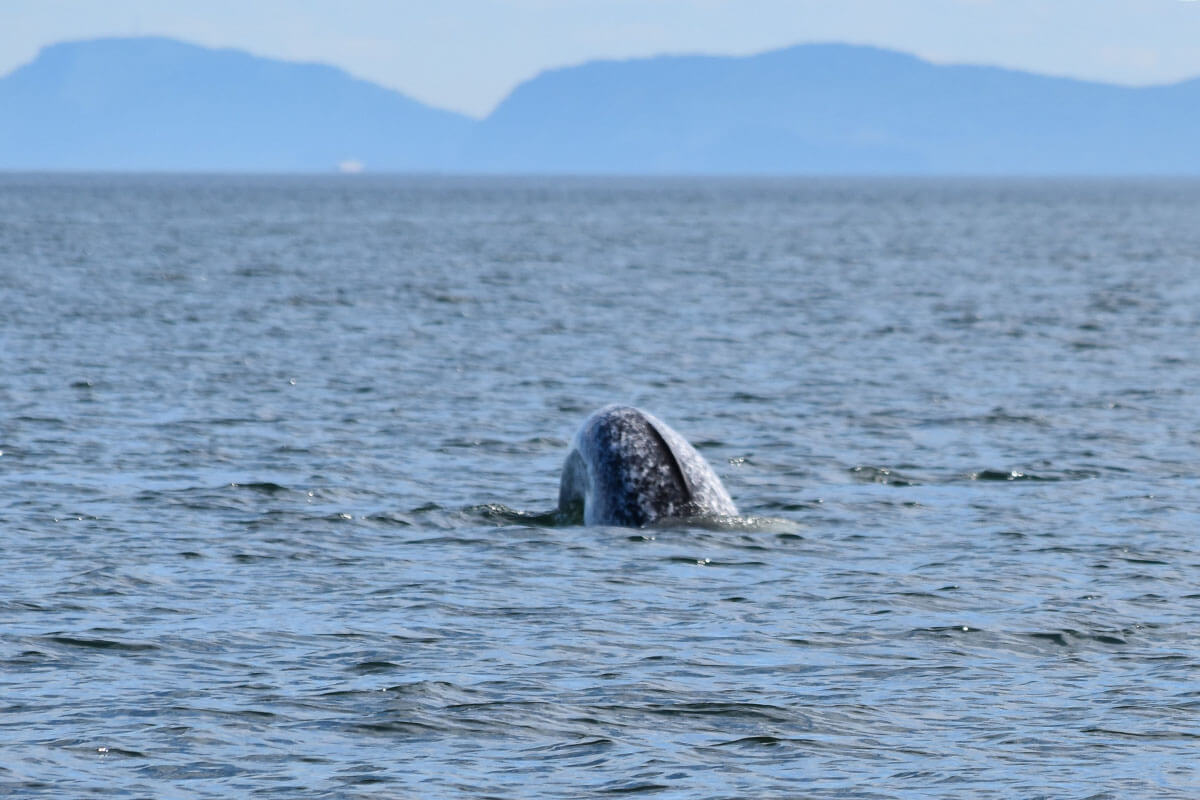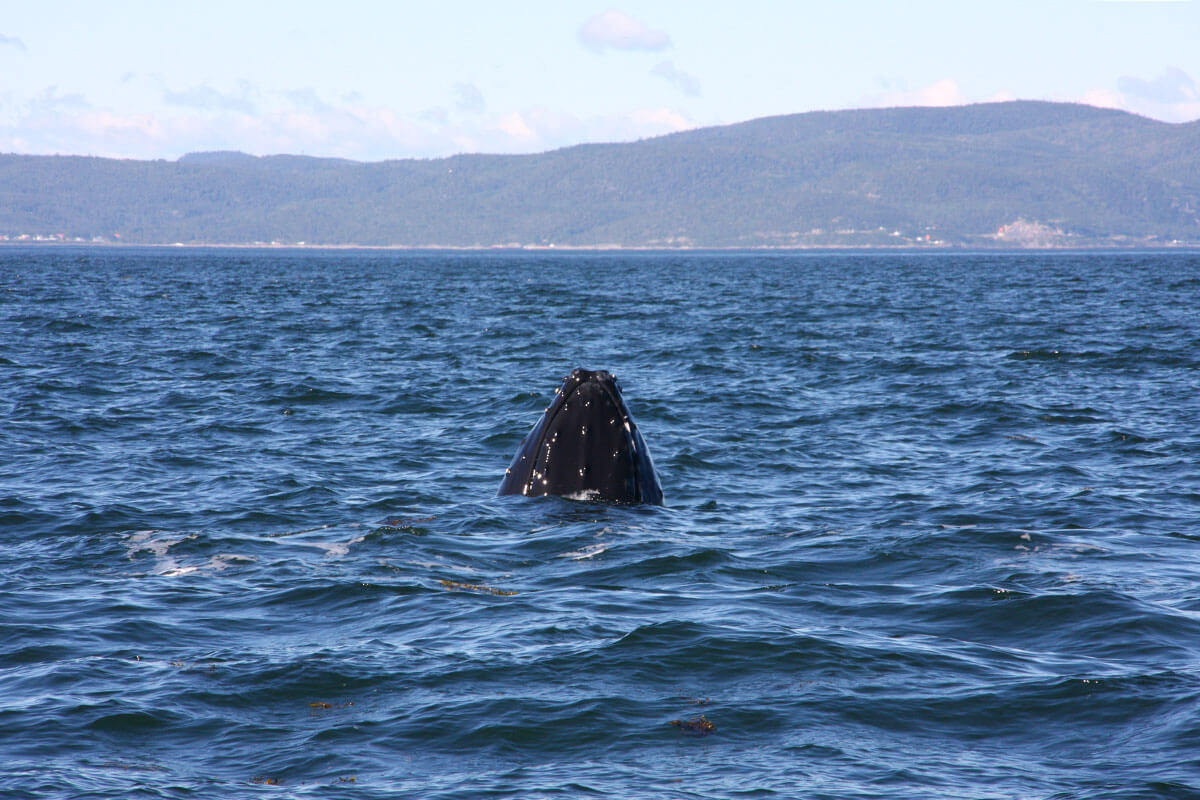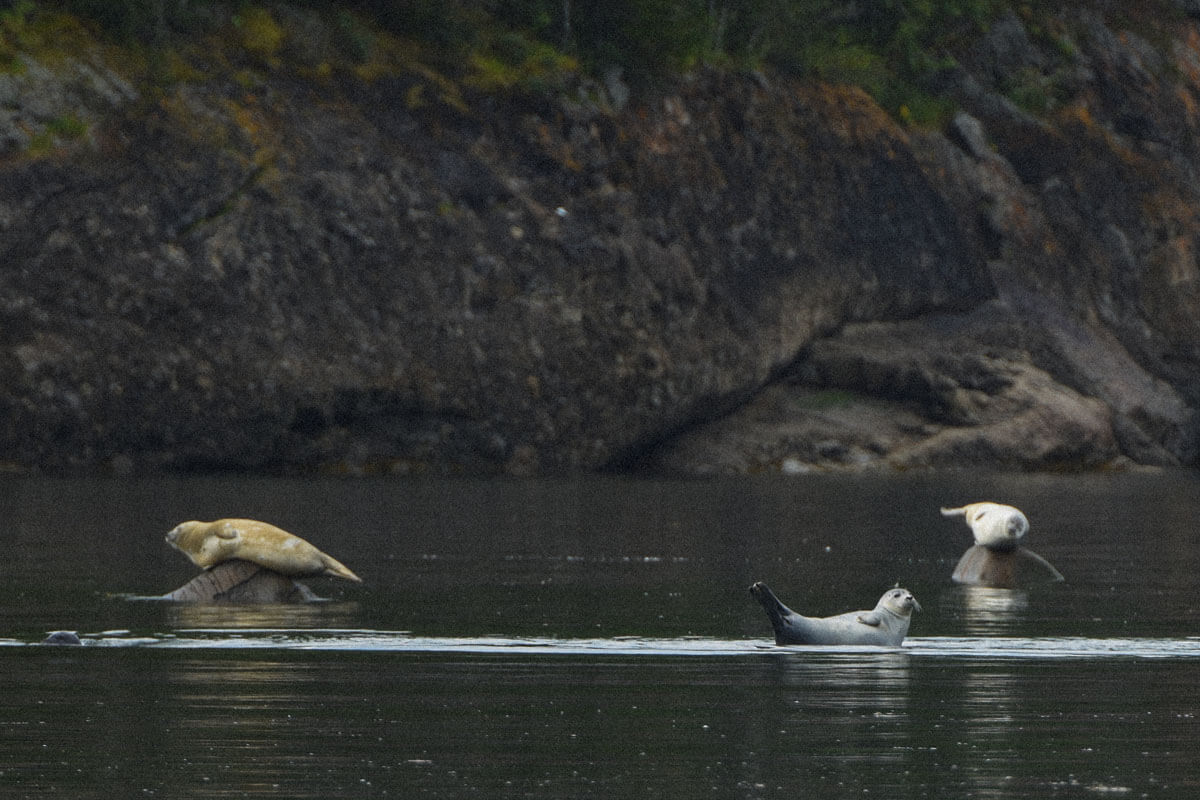In summertime, are you the type of person who returns year after year to the same campsite or same chalet, or are you more of a nomad or “road-tripper”? We could almost ask whales this very question! Some individuals are loyal to a certain feeding site and will spend the entire summer there, while others make the journey from Tadoussac to Sept-Îles, with a quick detour to Percé in-between.
As for the regulars, we have Bp955, a.k.a. “Ti-Croche”, who has been in the Saguenay-St. Lawrence Marine Parksince June, and perhaps even earlier, when few human eyes were scanning these waters. Since 2017, this fin whale has always spent practically the entire summer in the Estuary. As for humpbacks, Tic Tac Toe and her calf also seem to want to make the most of the Estuary this year. However, Tic Tac Toe is known to make forays into the regions of Sept-Îles, the Mingan Archipelago and the Gaspé Peninsula. Perhaps with a calf in tow, now it’s just easier to stay in one place?
The female blue whale B082, nicknamed Crinkle because of her wrinkled skin, prefers to wander. Photographed off the coast of Les Escoumins in August, she was seen this past week near Port-Cartier. On September 1, Jacques Gélineau photographed twelve different blue whales. “There were a lot more; I saw spouts everywhere in the distance, but I couldn’t document every one of them,” he testifies. Crinkle is swimming with an individual at her side. This time of the year, pairs are beginning to form in the St. Lawrence. Thanks to photo-ID techniques and biopsies, researchers have been able to confirm that the duos are predominantly made up of a male and a female. The blue whale mating season is right around the corner!
That same day, Jacques came across about fifteen fin whales, tons of white-sided dolphins, numerous harbour porpoises and a handful of minke whales. “Offshore has been teeming with life for almost two weeks now! Whenever I’m able to get out between storms, it’s great,” he says with a smile. In-between whale sightings, he unfortunately had to pick up a large number of drifting Styrofoam buoys. “These ‘single-use’ buoys pose a danger for wildlife. Gulls peck atthem, which is not good for the birds. In storms and rough seas, the buoys can detach and drift away. It’s a real problem,” he laments.
Sleeping like a log
Opposite Cap-Chat, a black back floats on the surface on August 29. Is the whale entangled? Injured? Spouts appear at regular intervals, but the dorsal fin barely breaks the surface. Then, the animal disappears under the waves. A few days later, a similar scenario plays out again in Cloridorme. The humpback is so close to shore that the local resident is afraid it will run aground. A volunteer from the Quebec Marine Mammal Emergency Response Network travels to the scene, but the whale has since disappeared. Offshore, humpbacks have been present in numbers. On September 1, a naturalist at the Pointe-Noire Interpretation and Observation Centrespots two motionless humpbacks on the surface. Concerned, she scrutinizes them through her binoculars, but does not see any sign of injury or ropes. All the same, she doesn’t take her eyes off them. Suddenly, the two whales hurl themselves into the air!
What were these humpbacks doing? Resting, in all likelihood. When sleeping, humpbacks look like large logs floating on the surface. Sleeping on the surface is referred to as “logging” on account of this resemblance. The time of rest will vary depending on the whale’s activities. If it feeds at night, it’s a safe bet that it will have to recharge its batteries the following day!
Belugas on the go
On August 27, a jogger trains for the Béluga Ultra-Trail, a benefit trail race for the St. Lawrence beluga (there are still a few places left if you would like to register). Along the trail that connects Baie Sainte-Marguerite and Tadoussac, she crosses paths with eight ruffed grouse, a snowshoe hare, a feeding minke whale and belugas charging down the Saguenay at full speed to return to the St. Lawrence. She struggles to keep her eye on them from the trail as they are carried by the current of the ebbing tide. At the tip of Pointe de l’Islet, she has no choice but to stop and watch them disappear into the open sea. Once again, belugas continue their mysterious life in the depths of the St. Lawrence, far from human eyes.
Where are the whales this week? Find out on the map!
This map gives an idea of the presence of whales and does not at all represent the actual distribution of whales in the St. Lawrence. Use it for fun!









